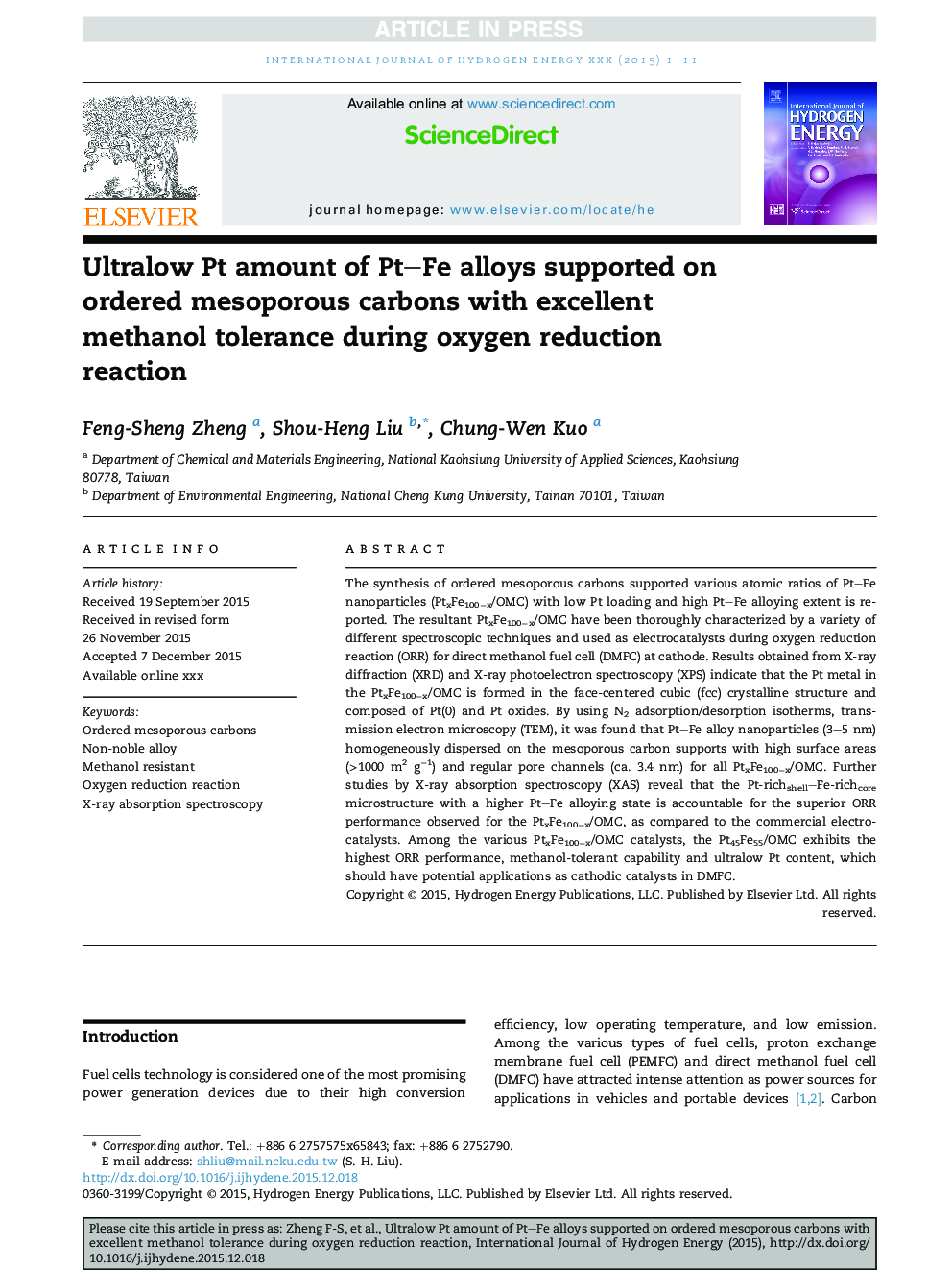| Article ID | Journal | Published Year | Pages | File Type |
|---|---|---|---|---|
| 7711905 | International Journal of Hydrogen Energy | 2016 | 11 Pages |
Abstract
The synthesis of ordered mesoporous carbons supported various atomic ratios of Pt-Fe nanoparticles (PtxFe100âx/OMC) with low Pt loading and high Pt-Fe alloying extent is reported. The resultant PtxFe100âx/OMC have been thoroughly characterized by a variety of different spectroscopic techniques and used as electrocatalysts during oxygen reduction reaction (ORR) for direct methanol fuel cell (DMFC) at cathode. Results obtained from X-ray diffraction (XRD) and X-ray photoelectron spectroscopy (XPS) indicate that the Pt metal in the PtxFe100âx/OMC is formed in the face-centered cubic (fcc) crystalline structure and composed of Pt(0) and Pt oxides. By using N2 adsorption/desorption isotherms, transmission electron microscopy (TEM), it was found that Pt-Fe alloy nanoparticles (3-5Â nm) homogeneously dispersed on the mesoporous carbon supports with high surface areas (>1000Â m2Â gâ1) and regular pore channels (ca. 3.4Â nm) for all PtxFe100âx/OMC. Further studies by X-ray absorption spectroscopy (XAS) reveal that the Pt-richshell-Fe-richcore microstructure with a higher Pt-Fe alloying state is accountable for the superior ORR performance observed for the PtxFe100âx/OMC, as compared to the commercial electrocatalysts. Among the various PtxFe100âx/OMC catalysts, the Pt45Fe55/OMC exhibits the highest ORR performance, methanol-tolerant capability and ultralow Pt content, which should have potential applications as cathodic catalysts in DMFC.
Related Topics
Physical Sciences and Engineering
Chemistry
Electrochemistry
Authors
Feng-Sheng Zheng, Shou-Heng Liu, Chung-Wen Kuo,
